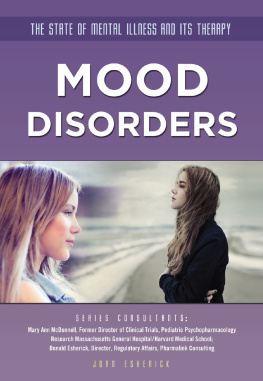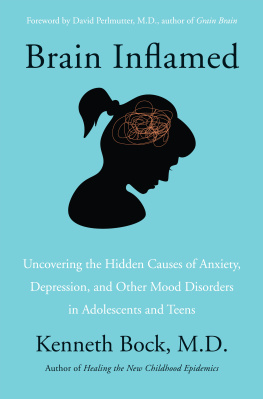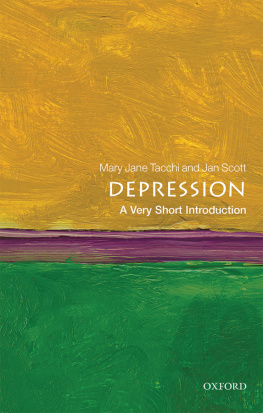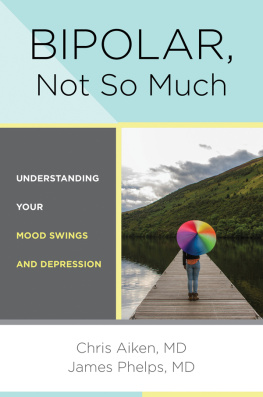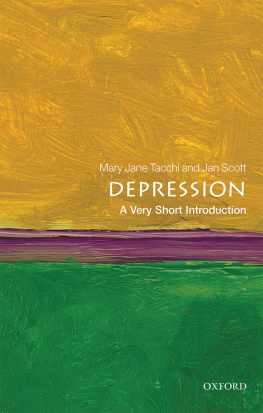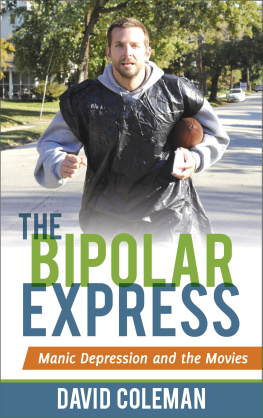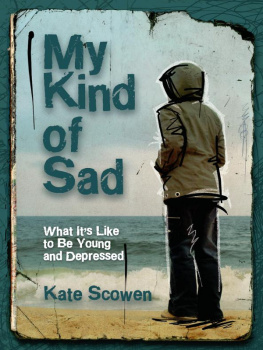 | Mason Crest
450 Parkway Drive, Suite D
Broomall, PA 19008
www.masoncrest.com |
Copyright 2014 by Mason Crest, an imprint of National Highlights, Inc. All rights reserved. No part of this publication may be reproduced or transmitted in any form or by any means, electronic or mechanical, including photocopying, recording, taping or any information storage and retrieval system, without permission from the publisher.
Printed in the Hashemite Kingdom of Jordan.
First printing
9 8 7 6 5 4 3 2 1
Series ISBN: 978-1-4222-2819-7
ISBN: 978-1-4222-2829-6
ebook ISBN: 978-1-4222-8990-7
The Library of Congress has cataloged the
hardcopy format(s) as follows:
Library of Congress Cataloging-in-Publication Data
Esherick, Joan.
[Drug therapy and mood disorders]
Mood disorders / Joan Esherick.
pages cm. (The state of mental illness and its therapy)
Audience: Age 12.
Audience: Grade 7 to 8.
Revision of: Drug therapy and mood disorders. 2004.
Includes bibliographical references and index.
ISBN 978-1-4222-2829-6 (hardcover) ISBN 978-1-4222-2819-7 (series) ISBN 978-1-4222-8990-7 (ebook)
1. Affective disordersJuvenile literature. 2. Affective disordersChemotherapyJuvenile literature. I. Title.
RC537.E765 2014
616.8527061dc23
2013008199
Produced by Vestal Creative Services.
www.vestalcreative.com
This book is meant to educate and should not be used as an alternative to appropriate medical care. Its creators have made every effort to ensure that the information presented is accuratebut it is not intended to substitute for the help and services of trained professionals.
CONTENTS
by Mary Ann McDonnell
T eenagers have reason to be interested in psychiatric disorders and their treatment. Friends, family members, and even teens themselves may experience one of these disorders. Using scenarios adolescents will understand, this series explains various psychiatric disorders and the drugs that treat them.
Diagnosis and treatment of psychiatric disorders in children between six and eighteen years old are well studied and documented in the scientific journals. A paper appearing in the Journal of the American Academy of Child and Adolescent Psychiatry in 2010 estimated that 49.5 percent of all adolescents aged 13 to 18 were affected by at least one psychiatric disorder. Various other studies have reported similar findings. Needless to say, many children and adolescents are suffering from psychiatric disorders and are in need of treatment.
Many children have more than one psychiatric disorder, which complicates their diagnoses and treatment plans. Psychiatric disorders often occur together. For instance, a person with a sleep disorder may also be depressed; a teenager with attention-deficit/hyperactivity disorder (ADHD) may also have a substance-use disorder. In psychiatry, we call this comorbidity. Much research addressing this issue has led to improved diagnosis and treatment.
The most common child and adolescent psychiatric disorders are anxiety disorders, depressive disorders, and ADHD. Sleep disorders, sexual disorders, eating disorders, substance-abuse disorders, and psychotic disorders are also quite common. This series has volumes that address each of these disorders.
Major depressive disorders have been the most commonly diagnosed mood disorders for children and adolescents. Researchers dont agree as to how common mania and bipolar disorder are in children. Some experts believe that manic episodes in children and adolescents are underdiagnosed. Many times, a mood disturbance may co-occur with another psychiatric disorder. For instance, children with ADHD may also be depressed. ADHD is just one psychiatric disorder that is a major health concern for children, adolescents, and adults. Studies of ADHD have reported prevalence rates among children that range from two to 12 percent.
Failure to understand or seek treatment for psychiatric disorders puts children and young adults at risk of developing substance-use disorders. For example, recent research indicates that those with ADHD who were treated with medication were 85 percent less likely to develop a substance-use disorder. Results like these emphasize the importance of timely diagnosis and treatment.
Early diagnosis and treatment may prevent these children from developing further psychological problems. Books like those in this series provide important information, a vital first step toward increased awareness of psychological disorders; knowledge and understanding can shed light on even the most difficult subject. These books should never, however, be viewed as a substitute for professional consultation. Psychiatric testing and an evaluation by a licensed professional are recommended to determine the needs of the child or adolescent and to establish an appropriate treatment plan.
by Donald Esherick
W e live in a society filled with technologyfrom computers surfing the Internet to automobiles operating on gas and batteries. In the midst of this advanced society, diseases, illnesses, and medical conditions are treated and often cured with the administration of drugs, many of which were unknown thirty years ago. In the United States, we are fortunate to have an agency, the Food and Drug Administration (FDA), which monitors the development of new drugs and then determines whether the new drugs are safe and effective for use in human beings.
When a new drug is developed, a pharmaceutical company usually intends that drug to treat a single disease or family of diseases. The FDA reviews the companys research to determine if the drug is safe for use in the population at large and if it effectively treats the targeted illnesses. When the FDA finds that the drug is safe and effective, it approves the drug for treating that specific disease or condition. This is called the labeled indication.
During the routine use of the drug, the pharmaceutical company and physicians often observe that a drug treats other medical conditions besides what is indicated in the labeling. Studies may be conducted to further demonstrate the drugs effectiveness in these conditions, but the results may not be conclusive. While the labeling will not include the treatment of the particular condition, a physician can still prescribe the drug to a patient with this disease. This is known as an unlabeled or off-label indication.
I have reviewed the books in this series from the perspective of the pharmaceutical industry and the FDA, specifically focusing on the labeled indications, uses, and known side effects of these drugs. Further information can be found on the FDAs website (www.FDA.gov).

